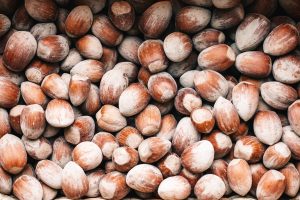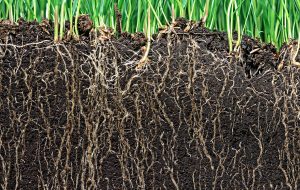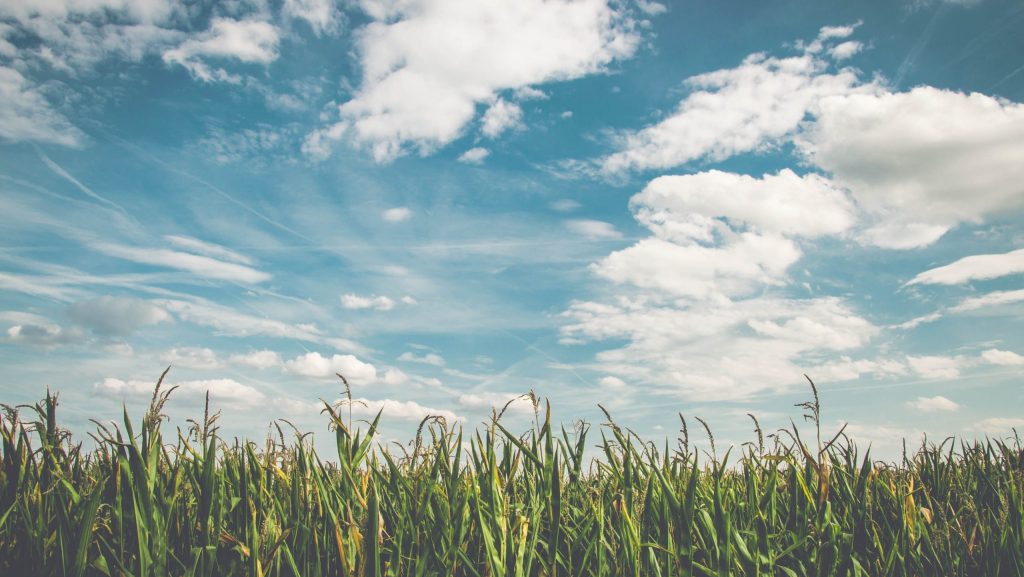When you think of Wisconsin, you think of agriculture. Thirty percent of Wisconsin’s land is used for agriculture — that is 64,400 farms on 14.3 million acres. Wisconsin agriculture contributes 16.4% to our state’s economy, $104.8 billion annually. We also export $3.96 billion worth of Wisconsin-grown agricultural products to 146 countries worldwide, with the most valuable agricultural exports consisting of prepared vegetables, fruit, nuts, or other plant parts. Nationwide, we lead the US as the #1 state producer of snap beans, cheese, cranberries, mink pelts, dry whey, milk goats, corn for silage, and sweet corn. We are #3 in the US for potato production. Globally, Wisconsin is famous for…cheese…but also our high-quality ginseng, grown under the protective canopy of existing forest cover and used extensively throughout Asia for medicinal properties.
However, with all this production, the problems in Wisconsin agriculture have never been clearer. Current dominant farming models are harming the environment and contributing to the release of greenhouse gases that are changing our climate. Wisconsin agriculture is a significant source of greenhouse gas emissions, and that contribution is unfortunately growing. According to the Wisconsin greenhouse gas emissions inventory report published by the DNR in 2021, since 2005, emissions from buildings, transportation, and electricity have all decreased by 9%. At the same time, emissions from agriculture increased 21.3%, releasing the equivalent of 3.5 metric tons of carbon dioxide into the atmosphere.
For decades, farmers have produced abundant and inexpensive food, but at great environmental cost. Mono-cropping (the practice of growing a single crop year after year on the same land) of corn, soybeans, and wheat has resulted in tired soils that are put on life-support through the intensive annual application of fertilizers to replenish what has been lost. Annual production of these short-lived commodity crops means that post-harvest, removal of plant roots in the field, farmland soils are left exposed to the elements, leading to drying, erosion, and runoff of both topsoil and nutrients into our waterways. Only 8% of agriculture fields in Wisconsin use cover crops to keep exposed soils covered and in place. Nutrients with no plant roots to uptake them, end up running off fields, and contaminate our groundwater, streams, rivers and lakes…even the water we drink. Tens of thousands of private wells in Wisconsin are polluted with unsafe levels of nitrates, 90% of which come from agricultural sources like chemical fertilizer and livestock manure. Algae blooms from high amounts of fertilizer destroy native habitat and downstream have led to the dead zone in the Gulf of Mexico.
For livestock farmers struggling to keep up with the demand for dairy and beef products, incentives are high to maximize the number of cattle heads in a herd, which can lead to overgrazing of fields. Compacted soils from high animal traffic leads to loss of oxygen in the soil, oxygen that is critical for the survival of beneficial soil microorganisms whose reason for existing is to transform nutrients into forms plants can uptake. This leads to dying soils (known as soil degradation), and poor soils produce poor quality forage for livestock grazing. Farmers seeking both solutions to feed their herd and to also reduce the amount of time/energy it takes to feed, milk, or process their many head of livestock, may convert their operations into concentrated animal feeding operations (CAFOs) to increase the efficiency of management and potential economic returns for the farmer. However, CAFOs intensify the accumulation of manure and other waste, and they increase the food miles of livestock feed, resulting in greater release of greenhouse gases into the atmosphere from the methane released from improper manure management and carbon-dioxide from shipping livestock feed. All of this contributes to climate change.
In turn, climate change is impacting Wisconsin farms, where we are beginning to experience warmer winters, wetter springs, and increased extreme weather events. At the farm level, during extreme heat events, milk production decreases and groundwater usage increases. During extreme rainfall events, waterlogged soils mean delayed planting and harvest times, greater incidences of pests and diseases on stressed plants, and increased runoff of nutrients into water sources. All of this puts a strain both on farm-level decisions but also on the income our farmers can expect for all their hard work. And with these climate shifts, comes a shift in what we can farm, where we can farm it. It’s a vicious cycle. A wicked problem, you might say.

But there is hope! Wisconsin farmers (and we, as consumers) can actively be part of the solution. Agriculture plays a key role in helping Wisconsin combat climate change by focusing on natural climate solutions that protect and regenerate soil health while reducing emissions of carbon dioxide and other greenhouse gases. Wisconsin needs a suite of strategies to address the very real threats posed by climate change. These strategies must be based on the most up-to-date science to be effective at holding carbon in the soil, reducing emissions from fertilizers and manure, and building soil health. But at the same time, they need to be grounded in the realities and experiences of Wisconsin farmers and include significant incentives to encourage widespread adoption.
The time for bold action is NOW.
What are Natural Climate Solutions?
Natural Climate Solutions are a suite of strategies for landscape management that protect, restore, and regenerate the soil, keeping carbon where it belongs, and minimizing emissions of other greenhouse gases. These strategies mitigate both the contributing causes and the negative effects of climate change. You may have heard terms such as, “nature-based solutions,” “natural carbon storage,” “agroecology,” “conservation agriculture,” “regenerative agriculture,” and “climate-smart agriculture.” There are a lot of different ways of saying the same or similar thing, but ultimately Natural Climate Solutions encompass all those accompanying practices that are cost-effective means of removing carbon from the atmosphere and holding it in the soil where it belongs, while significantly reducing methane and nitrous oxide emissions— emissions which are tens to hundreds of times more potent than carbon dioxide!
In addition to mitigating climate change, Natural Climate Solutions can improve soil health (minimize disturbance, maximize soil cover, biodiversity and continuous living roots to improve water retention in soils, and prevent runoff and erosion), water quality (improving the quality of surrounding bodies of water), and biodiversity (increased soil microbes, diversity in agricultural plants, pollinators, natural pest-predators and other wildlife). These strategies can also help improve resilience, or our farmlands’ ability to cope with the effects of climate change. They do all these things while improving the long-term ability of Wisconsin’s agricultural systems to produce sustainable quantities of high-quality products for markets.
From problems to solutions: Emerging models of Natural Climate Solutions
We know the world’s soil currently holds about twice as much carbon as the atmosphere, and improper management of that soil releases carbon into the atmosphere. So focusing on soil health is not only a “natural” climate solution, it also has the potential to contribute up to a third of the global mitigation needed by 2030, if we are to keep climate change from getting out of control. What does science say are the most effective ways to do this? Broadly these include: improved fertilizer & manure management, continuous living cover crops, minimized tillage or no-till planting strategies, rotational grazing strategies, conversion of annual crop fields to perennial crop fields, and agroforestry, or the incorporation of trees (fruit, nut or timber) into crop and livestock systems. The Clean Wisconsin Science Team and Natural Climate Solutions Team are working together to quantify the efficacy of these approaches for Wisconsin’s specific soils, climate, and agriculture.

Some Natural Climate Solutions lower overhead costs for farmers and increase income potential through agricultural product diversification. However, transitioning our simplified production systems to more complex systems that work within the ecology of the soil, plants, and animals on a farm is no easy task. Change is hard, it can be messy, and it can be expensive. In order to incentivize the change we need, our farmers need access to stable, diversified markets and processing facilities that meet the needs of all scales of farming operations in Wisconsin, as well as policy incentives for farmers to adopt improved farming practices. These remain the largest deterrents to farmers’ adoption of Natural Climate Solutions.
In advance of the November 2022 election, Clean Wisconsin is laying the groundwork for this transition by conducting scientific analyses on best “climate-smart” agricultural practices for the specific soils and crops in Wisconsin. We are building relationships and advancing discussions with key stakeholders in the public, private and civic sectors, in order to build coalitions and inform policy development that is a win-win-win for all stakeholders in Wisconsin. And we are leveraging the best of scientific and traditional ecological knowledge to propose a package of Natural Climate Solutions policies for the next legislative session.
It is going to take deepening relationships and a coordinated effort built on trust and reciprocity for us to achieve the necessary critical mass to address the looming climate crisis. Clean Wisconsin will be sure to send you regular updates with opportunities to contact your legislators to support Natural Climate Solutions that protect our food, water, air and natural heritage. In the meantime, support your local farmers who are using nature-friendly practices such as agroecology or conservation farming, and increase the demand at your local markets to support these farmers! We all eat, we’re all in this together.

